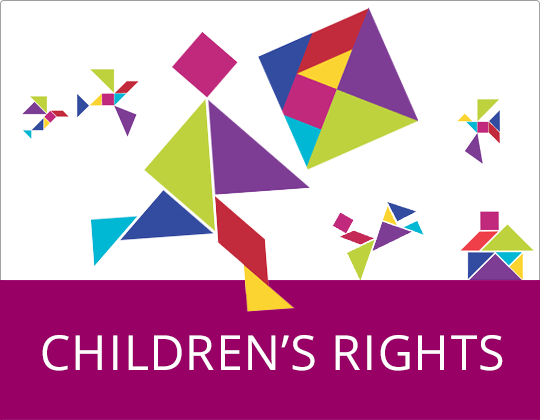Tools and mechanisms in member states

To assist member States in the development of such approaches, the Council of Europe has produced the Council of Europe Policy Guidelines on Integrated National Strategies for the Protection of Children from Violence. According to the 2018 CAHENF survey on Integrated National Strategies for the Protection of Children from Violence, the policy guidelines, which were adopted 10 years ago, have already served as inspiration for integrated national strategies in 19 member states.
Policy Guidelines on Integrated National Strategies
The Council of Europe Policy Guidelines on Integrated National Strategies for the Protection of Children from Violence are based on the recommendations of the UN Secretary General’s Study on Violence against Children.
The Guidelines serve as a source of inspiration and guidance for states striving to adopt more holistic responses to violence against children, either in developing comprehensive strategies or in developing more cross-cutting approaches in specific sectors of violence.
The guidelines are intended to support the creation of a multifaceted and systematic framework based on the cross-sectoral co-operation of governmental players, non-governmental organisations, local authorities and professionals working with children.
The Council of Europe Policy Guidelines on Integrated National Strategies for the Protection of Children from Violence are based upon eight general principles and four operative principles, which have been mainstreamed throughout national, regional and local action, education and awareness-raising measures, legal, policy, and institutional frameworks, research and data collection.
The principles are:
General Principles
- 1. Protection against violence
- 2. The right to life and maximum survival and development
- 3. Non-discrimination
- 4. Gender equality
- 5. Child participation
- 6. A state's obligations
- 7. Other actor's obligations and participation
- 8. Best interest of the child
Operational principles
- 1. Multidimensional nature of violence
- 2. Integrated approach
- 3. Cross-sectoral cooperation
- 4. Multi-stakeholder approach
The Council of Europe guidelines contain detailed proposals on how to develop an integrated national strategy on the rights of the child and the eradication of violence against children. The strategy is defined as a multidisciplinary and systematic framework integrated into the national planning process, rooted in the UNCRC and bringing together all stakeholders.
Integrated national strategies by country
2018 CAHENF Survey on Integrated National Strategies for the Protection of children from violence
To take stock of specific actions undertaken by the 47 member States of the Council of Europe to protect children from violence, the Council of Europe’s intergovernmental Ad Hoc Committee for the Rights of the Child carried out a broad survey based on a detailed questionnaire in 2018. The survey, on the basis of responses received from 34 member States, showed that some form of specific action under UN mechanisms to tackle violence against children had been taken by most States. A total of 23 responding member States indicated that they had developed an integrated strategy on violence against children and for 19 of these States, the Council of Europe Policy Guidelines had served as inspiration.
Council of Europe member States have developed a wealth of responses to violence against children. Some have based their responses on the Council of Europe’s Policy Guidelines on Integrated National Strategies for the Protection of Children from Violence whereas others have chosen to develop ad hoc responses or specifically targeted measures to address violence against children.
The following countries have developed integrated strategies and/or specific national actions and good practice examples on the protection of violence against children (or specific aspects of violence) over recent years:





Programme to support the development of 10-18 year-old, primary or secondary school girls from the Roma community. The ultimate goal is to boost the motivation of girls exposed to school drop-out and to foster a learning enhancing behaviour among their families.

The memorandum of understanding between the Department for Family Policies and the Ombudsperson for children includes specific action focusing on children who witness violence and the traumatic effects this can have on them. Children who witness violence are hence recognised as victims in need of specific support measures.




In Romania, the legal regulatory framework in force is detailed in scope and aligned with the UNCRC, prohibiting all forms of physical or mental violence, corporal punishment, any other form of cruel or degrading punishment or treatment of children in all circumstances (e.g. home, schools, alternative care etc.), and include mechanisms to identify child maltreatment, referral and investigation, treatment and follow-up as well as judicial involvement. Compulsory reporting of all forms of violence and abuse of children to appropriate bodies by certain professional groups is also mandatory by law. Corporal punishment is banned by law in all settings.


Barnahus is the name for activities where police, prosecutors, social services and health and medical care collaborate in common premises during the investigation process in case of suspicion of violence or sexual abuse against children. In Sweden there are currently over 30 Barnahus, compared to six in 2006.
Other responses
Austria
Reporting obligations for professionals to notify of a suspected endangering of a child
…Croatia, Denmark, Slovenia, Switzerland
Ireland
Tusla, the Child and Family Agency’s out-of-hours social work service
Switzerland
National study on the right of the child to express her/his own opinion in different sectors of society



